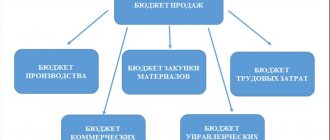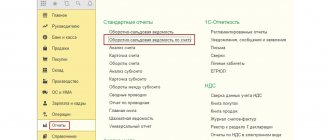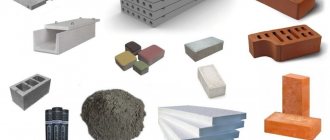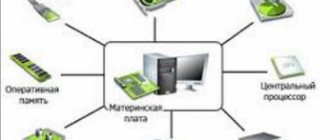What applies to TZR
In accounting, transportation and procurement expenses (TZR) include costs associated with the procurement and delivery of materials to the organization (clause 70 of the Methodological Instructions, approved by Order of the Ministry of Finance of Russia dated December 28, 2001 No. 119n).
TZR, in particular, include:
- costs associated with loading and unloading operations;
- transportation costs;
- travel expenses associated with the procurement and delivery of materials;
- fees for storage of materials at places of purchase, at railway stations, ports, marinas;
- warehouse expenses (if warehouses are used both for the procurement of materials and for storing goods (finished products), such expenses can be attributed to current costs);
- expenses for maintaining procurement points, warehouses organized in places where materials are procured;
- fees for loans and borrowings raised for the purchase of materials (accrued before the materials were accepted for accounting);
- shortages and spoilage within the limits of natural loss;
- markups, allowances, commissions for intermediaries.
Such a list is given in paragraph 70 of the Methodological Instructions, approved by Order of the Ministry of Finance of Russia dated December 28, 2001 No. 119n.
An approximate nomenclature of TZR is given in Appendix 2 to the Methodological Instructions approved by Order of the Ministry of Finance of Russia dated December 28, 2001 No. 119n.
Accounting: methods of accounting for goods and materials
In accounting, take into account transportation and procurement costs in one of the following ways:
- directly in the actual cost of each unit of materials;
- separately on account 15 “Procurement and acquisition of materials” (with subsequent attribution to account 16 “Deviation in the cost of material assets”);
- separately on a separate sub-account opened to account 10 “Materials”, for example on the sub-account “Transportation and procurement costs”.
Fix the chosen method of accounting for goods and materials in the accounting policy.
This procedure is established by paragraph 83 of the Methodological Instructions, approved by Order of the Ministry of Finance of Russia dated December 28, 2001 No. 119n.
For organizations that have the right to keep accounting in a simplified form, a special procedure for accounting for expenses is provided (Parts 4, 5, Article 6 of the Law of December 6, 2011 No. 402-FZ).
If an organization includes material and equipment in the actual cost of materials, then do not keep separate records of these expenses. When materials arrive, make the following entries:
Debit 10 Credit 60 (20, 21, 75…)
– the receipt of materials is reflected;
Debit 10 Credit 60 (76, 23, 26…)
– included TZR to the cost of materials.
If the organization accounts for material and materials separately on account 10, then upon receipt of materials, make the following entries:
Debit 10 Credit 60 (20, 21, 75…)
– the receipt of materials is reflected at book value;
Debit 10 subaccount “Transportation and procurement costs” Credit 60 (76, 23, 26...)
– TZR taken into account.
If an organization accounts for inventory items separately on account 15, then upon receipt of materials, the following entries need to be made:
Debit 15 Credit 60 (76)
– the receipt of materials is reflected in the assessment provided for in the contract (other documents);
Debit 15 Credit 60 (76)
– taken into account in the actual cost of TZR materials;
Debit 10 Credit 15
– materials are capitalized at the accounting price.
Write off deviations of the actual cost from the book price at the time of posting the materials using the following entries:
Debit 16 Credit 15
– the deviation of the actual cost of received materials from their book price is reflected;
Debit 15 Credit 16
– the excess of the book price over the actual cost of purchased materials is reflected.
If TZR is reflected separately, then their analytical accounting should be carried out in the context of individual types and groups of materials. This means that the total amount of TRP associated with the procurement and delivery of heterogeneous materials must be distributed between them.
There is an exception to this rule. If the ratio of TRP and the cost of procured (delivered) materials is insignificant, then they can not be distributed and taken into account in the total amount:
- or on account 10 subaccount “Transportation and procurement costs”;
- or on account 15 “Procurement and acquisition of materials” (with subsequent attribution to account 16 “Deviation in the cost of material assets”).
This procedure is provided for in paragraph 84 of the Methodological Instructions, approved by Order of the Ministry of Finance of Russia dated December 28, 2001 No. 119n.
If an organization maintains separate records of goods and materials, materials are reflected in accounting at accounting prices. An organization can use the following as accounting prices:
- planned price approved by the organization;
- negotiated price;
- actual cost of materials for the last reporting period (month, quarter, year);
- the average price of the group (if the planned price is set not for a specific item number, but for their group).
If the accounting price deviates from the actual cost by more than 10 percent, it must be revised.
Such rules are established by paragraph 80 of the Methodological Instructions, approved by Order of the Ministry of Finance of Russia dated December 28, 2001 No. 119n.
If inventory items are accounted for separately, then they must be written off to the same accounts to which materials are written off. Document this at the end of the month with the following posting:
Debit 20 (23, 25, 26...) Credit 16 (10 subaccount “Transportation and procurement expenses”)
– TZR for consumed materials are written off.
This is stated in paragraph 86 of the Methodological Instructions, approved by order of the Ministry of Finance of Russia dated December 28, 2001 No. 119n.
Results
The choice of method for accounting for inventories depends on the characteristics of the organization, the share of these expenses in the cost of inventories, the amount of inventory balances at the end of the reporting period and other factors. When forming an accounting policy, it is necessary to go through all available methods of accounting and distribution of equipment, since they can significantly affect the financial result of the organization.
You can find more complete information on the topic in ConsultantPlus. Free trial access to the system for 2 days.
Inclusion in the cost of goods and materials carried out after the transfer of ownership
Situation: is it possible to include transportation and procurement costs (TPC) in the actual cost of materials in accounting? The expenses were incurred after the transfer of ownership of the materials.
The answer to this question depends on the method of reflecting received materials.
Application of the method using accounts 15 “Procurement and acquisition of material assets” and 16 “Deviation in the cost of material assets” makes it possible to take into account in the actual cost of materials TZR produced after the transfer of ownership of materials. In this case, the debit of account 15 reflects the receipt of materials. Then the organization reflects in the debit of account 15 the costs of delivery (loading and unloading, etc.), including those incurred after the transfer of ownership of the materials. When all expenses have been taken into account, the organization will credit the materials to account 10 (at the accounting price), and the deviation of the actual cost (taking into account the technical requirements) from the accounting prices will be written off to account 16. These amounts are subsequently (at the end of the month) written off to account 20 (23, 25, 26) in proportion to the cost of written-off materials. Consequently, this option makes it possible to distribute equipment and materials (including those produced after the transfer of ownership of materials) between written-off and non-written-off materials. That is, if, for example, materials are used to produce a product, TZR are included in its cost in proportion to the cost of written-off materials.
This procedure follows from the Instructions for the chart of accounts (accounts 10, 15, 16), paragraph 8 of paragraph 6 of PBU 5/01 and paragraphs 86, 87 of the Methodological Instructions approved by Order of the Ministry of Finance of Russia dated December 28, 2001 No. 119n.
If the organization reflects the receipt of materials on account 10 without using accounts 15 and 16, then when they are transferred to the place of use, internal movement actually occurs (clause 51 of the Methodological Instructions approved by Order of the Ministry of Finance of Russia dated December 28, 2001 No. 119n). That is, the organization delivers materials to the place of use, the cost of which has already been formed on account 10. Based on clause 12 of PBU 5/01, the actual cost of materials cannot be changed. Therefore, TZR do not increase the actual cost of materials, but, depending on the purpose of use, MPZ are taken into account as part of expenses in account 20 (23, 25, 26, 97) (clauses 5, 16, 18 PBU 10/99). In this case, in accounting, reflect the amount of delivery costs (loading and unloading, etc.) by posting:
Debit 20 (23, 25, 26, 97) Credit 60
– expenses associated with the delivery of materials to the place of use are reflected.
Advice: there are arguments that allow you to take into account the cost of materials and equipment in the actual cost of materials, even if the organization receives materials and materials without using accounts 15 and 16. They are as follows.
To take into account the material and labor costs in the actual cost of materials, open a sub-account “Materials in transit” to account 10. This will allow you to adjust the cost of materials by the amount of fuel and equipment produced after the receipt of materials. This conclusion can be made by paragraph 26 of PBU 5/01, which allows for clarification of the actual cost of materials in transit.
When using the “Materials in transit” subaccount opened to account 10, make the following entries:
Debit 10 subaccount “Materials in transit” Credit 60
– reflects the cost of materials in transit;
Debit 10 subaccount “Materials in transit” Credit 60
– the actual cost of materials was adjusted to the amount of fuel and equipment produced after the transfer of ownership to the industrial plant;
Debit 10 Credit 10 subaccount “Materials in transit”
– materials have been capitalized.
This procedure follows from the Instructions for the chart of accounts.
How to calculate transportation and procurement costs
If an organization has a limited range of manufactured products and low turnover, the entire amount of fuel and equipment is directly taken into account in the cost structure.
But in practice this does not happen too often.
Typically, companies work in several directions at once and produce products in a fairly wide range. Therefore, TRP for a certain period of time is taken into account separately, and then in a special way distributed between the goods produced (sold) and the valuables remaining in the warehouse.
There is a formula by which the percentage of distribution of this type of costs is calculated:
(TZRnach + TZRotch)/(MCcon + RMCotch)*100% , where
TZRinit – the amount of expenses at the beginning of the period;
TZRotch – costs incurred during the period;
MTskon – the amount of material assets at the end of the period;
RMCotch – the amount of such expenses incurred during the period.
Distribution of fuel and equipment when supplying several types of materials
Situation: how to distribute goods and materials in accounting among several types of materials delivered by one vehicle?
The procedure for distributing transportation costs in accounting is not regulated by regulatory documents. Therefore, an organization can develop the optimal method independently and consolidate it in its accounting policies (clauses 4, 7 of PBU 1/2008). For example, when delivering dissimilar materials by one vehicle, TRP can be distributed in proportion to the number of materials, their weight or volume, depending on the specifics of the organization’s activities (or on the range of assets received).
If one delivery includes several dissimilar groups of materials (for example, some materials are measured in pieces, others in kilograms), then the organization must first distribute the goods and materials between these groups. This can be done, for example, in proportion to the number of seats occupied in the vehicle. There is another option - to convert all units of measurement to one, for example, to kilograms. The second option is more universal, but requires more complex calculations. Within one group of materials, TZR can be distributed in proportion to those units of measurement in which each nomenclature number of this group is taken into account.
An example of the distribution of TZR between dissimilar materials by the method of converting all units of measurement to one
Two types of materials were delivered to Alpha LLC in one vehicle: sheet metal (100 sheets) and a metal corner (200 m). Transport costs amounted to 7,000 rubles. without VAT.
To distribute transportation costs, Alpha's accountant converted various units of measurement of materials into one - kilograms. The weight of one sheet of metal is 60 kg. The weight of one meter of corner is 15 kg. The total weight of the delivered materials is: 60 kg × 100 sheets + 15 kg × 200 m = 9000 kg.
The accountant distributed the amount of transportation expenses as follows.
Transport costs for the delivery of sheet metal amounted to: 7,000 rubles. × 6000 kg: 9000 kg = 4667 rub.
Transport costs for delivery of a metal corner amounted to: 7,000 rubles. × 3000 kg: 9000 kg = 2333 rub.
The cost of freight transportation in the estimate
When drawing up estimates for construction and installation work financed from the federal or municipal budget, collections of estimated prices for the transportation of goods by road are required. These collections were developed in databases based on the price level for 2001 (FER, TER, etc.) and are translated into the current level through indexation.
However, in the calculations between the Customer and the Contractor, the actual costs of transporting goods at current market prices in a particular region can be used, but this is only possible if there is no competitive type of transportation in the price collections or this type of work is financed from a non-state budget. In these cases, a calculation is also drawn up justifying the actual transportation costs.
The procedure for calculating estimated prices for the transportation of goods by road in 2021 is determined by Order of the Ministry of Construction of Russia No. 517/pr dated September 4, 2019 “On approval of Methodological Recommendations for determining estimated prices for materials, products, structures, equipment and prices of services for the transportation of goods for construction » section 3.
This order explains in detail how to correctly and accurately calculate the cost of transporting goods by road, depending on the class of cargo, types of vehicles, transportation distance and types of roads along which transportation is carried out.
Accounting: methods of distribution of equipment and materials
To reduce the labor intensity of distributing transportation and procurement costs, an accountant can use one of the following simplified methods:
- the amount of TZR for all materials accepted for accounting in the reporting period is fully distributed between materials written off to accounts 20, 23 and 91-2. The use of this method is permitted if the amount of TZR does not exceed 10 percent of the cost of all written-off materials;
- the average percentage of inventories related to the cost of written-off materials is rounded to whole units;
- the amount of TZR is distributed taking into account their percentage prevailing at the beginning of the reporting period. The average percentage for the reporting period is not calculated in this case. If the amount of TRP determined in this way is overestimated or underestimated, then it should be adjusted in the next reporting period;
- the amount of TZR is distributed according to the standard fixed in the planned calculations. If actual costs differ from standard costs, then the difference is taken into account in the next reporting period;
- the amount of TZR is completely written off to increase the cost of materials consumed in the reporting period. The use of this method is allowed if the amount of TZR does not exceed 5 percent of the accounting cost of materials.
This procedure is provided for in paragraph 88 of the Methodological Instructions, approved by Order of the Ministry of Finance of Russia dated December 28, 2001 No. 119n.
Accounting: writing off TZR as expenses
Before determining the amount of inventories that are written off as expenses of the reporting period (month), you need to calculate the average percentage of inventories related to the cost of written-off materials. To do this, use the formula:
| Average percentage of inventories related to the cost of written-off materials | = | Balance of inventory at the beginning of the reporting period | + | Amount of inventory for materials received in the reporting period | : | Cost of remaining materials at the beginning of the reporting period (in accounting prices) | + | Cost of materials received during the reporting period (in accounting prices) | × | 100% |
After calculating the average percentage, determine the amount of inventory, which is written off to the cost of the reporting period. To do this, use the formula:
| The amount of inventories that is written off to the cost of the reporting period | = | Average percentage of inventories related to the cost of written-off materials | × | Accounting cost of materials consumed |
This procedure is provided for in paragraph 87 of the Methodological Instructions, approved by Order of the Ministry of Finance of Russia dated December 28, 2001 No. 119n.
An example of reflecting TZR in accounting using accounts 15 and 16
LLC "Proizvodstvennaya" is engaged in the manufacture of metal products. The organization keeps records of incoming materials using accounts 15 and 16. As of February 1, the organization’s records included:
- on account 10 - metal in the amount of 10 tons at a discount price of 2800 rubles/t for a total amount of 28,000 rubles;
- on account 16 – the balance of goods and materials related to this type of materials is 3,000 rubles.
During the month, “Master” purchased 50 tons of metal in the amount of 168,150 rubles. (including VAT – 25,650 rubles). The amount of TZR for these materials amounted to 17,700 rubles. (including VAT - 2700 rubles). In February, 35 tons of metal were transferred to production.
The Master's accountant made the following entries in the accounting:
Debit 15 Credit 60 – 142,500 rub. (168,150 rubles – 25,650 rubles) – the receipt of metal is reflected;
Debit 19 Credit 60 – 25,650 rub. – VAT on purchased metal is taken into account;
Debit 68 subaccount “Calculations for VAT” Credit 19 – 25,650 rub. – accepted for deduction of VAT on purchased materials (if there is a supplier invoice);
Debit 10 Credit 15 – 140,000 rub. (50 t × 2800 rub.) – metal was capitalized at accounting prices;
Debit 15 Credit 60 – 15,000 rub. (RUB 17,700 – RUB 2,700) – TZR reflected;
Debit 19 Credit 60 – 2700 rub. – VAT on TZR is taken into account;
Debit 68 subaccount “Calculations for VAT” Credit 19 – 2700 rub. – accepted for deduction of VAT on TZR;
Debit 16 Credit 15 – 17,500 rub. (RUB 142,500 + RUB 15,000 – RUB 140,000) – the difference between the book price and the actual cost of the received metal is written off;
Debit 20 Credit 10 – 98,000 rub. (35 tons × 2800 rub.) – the accounting value of the metal transferred to production is written off.
The amount of fuel and equipment, which is written off as cost in February, was calculated by Master’s accountant as follows.
The cost of metal in February, taking into account the balance at the beginning of the month (in accounting prices), was: 2800 rubles. × 10 t + 2800 rub. × 50 t = 168,000 rub.
The amount of TZR in February, taking into account the balance at the beginning of the month, is equal to: 3000 rubles. + 17,500 rub. = 20,500 rub.
The average percentage of inventory items related to the cost of written-off materials was: RUB 20,500. : 168,000 rub. × 100% = 12.2%.
The amount of inventory, which is written off to cost in February, is equal to: 98,000 rubles. × 12.2% = 11,956 rubles.
Debit 20 Credit 16 – 11,956 rub. – TZR for April were written off.
Use an accountant's certificate as a document confirming the calculation of the amount of TZR.
List of accounts involved in accounting entries:
|
|
Below are the transactions reflecting the accounting of goods and materials using a separate subaccount of account 10. These transactions reflect the distribution of amounts of goods and materials to the main accounts for accounting for material consumption
| Account Dt | Kt account | Wiring Description | Transaction amount | A document base |
| 10.10 | 60.01 | Receipt of goods and materials from counterparties is reflected | TZR amount | Certificate of completed workInvoice |
| 19 | 60.01 | VAT related to TZR has been allocated | VAT amount | Certificate of completed workInvoice |
| 68.2 | 19 | VAT is reflected for reimbursement from the budget | VAT amount | InvoicePurchase bookAct of completed work |
| 25 | 10.10 | The write-off of equipment and materials is reflected in the account of general production expenses of materials for the reporting period. | Estimated amount of TZR to be written off | Accounting certificate-calculation |
| 26 | 10.10 | The write-off of equipment and materials is reflected in the account for general business expenses of materials for the reporting period. | Estimated amount of TZR to be written off | Accounting certificate-calculation |
| 23 | 10.10 | The write-off of equipment and materials is reflected in the account for accounting for the consumption of materials for auxiliary production for the reporting period | Estimated amount of TZR to be written off | Accounting certificate-calculation |
| 20 | 10.10 | The write-off of equipment and materials is reflected in the accounts for accounting for the consumption of materials for the main production for the reporting period | Estimated amount of TZR to be written off | Accounting certificate-calculation |
| 90.2 | 10.10 | The write-off of goods and materials is reflected in the accounts for the sale of materials for the reporting period. | Estimated amount of TZR to be written off | Accounting certificate-calculation |
BASIC
The composition of TZR in tax accounting is not defined. Therefore, we can equate to them the costs listed in paragraph 70 of the Methodological Instructions, approved by Order of the Ministry of Finance of Russia dated December 28, 2001 No. 119n. That is, the composition of costs will be the same as in accounting.
At the same time, in relation to expenses for which the Tax Code of the Russian Federation provides for a special recognition procedure, this procedure must be taken into account. For example, interest on borrowed funds (including those raised for the purchase of materials) is normalized in tax accounting (Article 269 of the Tax Code of the Russian Federation) and is included in non-operating expenses (subclause 2, clause 1, Article 265 of the Tax Code of the Russian Federation). The Tax Code of the Russian Federation does not provide for a different procedure for their accounting. Therefore, they cannot be included in the cost of materials (including as TRP).
Losses from shortages (spoilage) identified when receiving materials within the limits of natural loss are included in material costs under a separate item (subclause 2, clause 7, article 254 of the Tax Code of the Russian Federation). Such shortages (losses) are not considered direct expenses, therefore they reduce the tax base for income tax in the period when the shortage (damage) was identified (clause 2 of Article 318 of the Tax Code of the Russian Federation). They are not included in the cost of materials (including as TRP). For more information about accounting for losses and shortages, see How to record shortfalls in the delivery of inventory items.
TZR, for which a special tax accounting procedure is not provided, are included in full in the cost of purchased materials (clause 2 of Article 254 of the Tax Code of the Russian Federation). When calculating income tax, they do not form an independent type of expense and are written off as part of the cost of materials the acquisition of which was associated.
The composition of the TRP, which forms the actual cost (cost) of materials in accounting and tax accounting, is presented in the table.
VAT on TZR is deductible subject to the conditions provided for in Articles 171 and 172 of the Tax Code of the Russian Federation. Chapter 21 of the Tax Code of the Russian Federation does not establish additional restrictions for tax deductions for TZR.
simplified tax system
The tax base of simplified organizations that pay a single tax on income is not reduced by TZR (clause 1 of Article 346.14 of the Tax Code of the Russian Federation).
If an organization pays a single tax on the difference between income and expenses, TZR should be included in the cost of materials (subclause 5, clause 1, article 346.16, clause 2, article 254 of the Tax Code of the Russian Federation). The procedure for writing them off fully complies with the rules that apply when calculating income tax, taking into account the provisions of paragraph 2 of Article 346.17 of the Tax Code of the Russian Federation (Clause 2 of Article 346.16 of the Tax Code of the Russian Federation). This paragraph establishes a mandatory condition for the recognition of expenses during simplification - their payment.
OSNO and UTII
If an organization applies a general taxation system and pays UTII, then it must keep separate records of income and expenses to calculate income tax and VAT (clause 9 of Article 274, clause 4 of Article 170 of the Tax Code of the Russian Federation).
Under the general taxation system, TZR are not taken into account separately and are included in the cost of materials (clause 2 of Article 254 of the Tax Code of the Russian Federation). If materials are simultaneously used in the activities of an organization subject to UTII and activities on the general taxation system, then their cost (taking into account the TZR) should be distributed (clause 9 of Article 274 of the Tax Code of the Russian Federation). The cost of materials related to one type of activity does not need to be distributed.
VAT that can be deducted on distributed materials is determined according to the methodology established in paragraph 4.1 of Article 170 of the Tax Code of the Russian Federation.
For more information about this, see How to deduct input VAT when separately accounting for taxable and non-taxable transactions.
To the share of expenses for the organization's activities subject to UTII, add the amount of VAT that cannot be deducted (subclause 3, clause 2, article 170 of the Tax Code of the Russian Federation).
The cost of containers, packaging, props in the estimate.
Containers, packaging and props are one of the most important components, and they are necessary to protect material assets from damage during transportation and movement, and naturally they are included in the cost of estimates.
So, according to clause 4.57 of MDS 81-35.2004, if materials, equipment, products, structures are used according to collections of estimated prices (FSSC, construction price), the cost of containers and packaging, props is already taken into account in the cost. But if the actual cost and the cost of the goods do not take into account the costs of containers and packaging, then they must be taken into account additionally in the estimate calculations. Usually, in addition to the cost of the goods, the supplier writes down the cost of packaging and containers on a separate line in the invoice or commercial proposal, but more often this is forgotten and the estimator has to separately calculate these prices. Clause 4.58 helps him with this. all the same document MDS 81-35.2004. Where it is said that in the absence of detailed information about the characteristics of containers and packaging, the cost can be calculated as a percentage of the cost of materials and equipment, namely:
- — large technological equipment – from 0.1% to 0.5%;
- — machine equipment – up to 1%;
- - electrical equipment, instrumentation and automation, tools - up to 1.5%.





